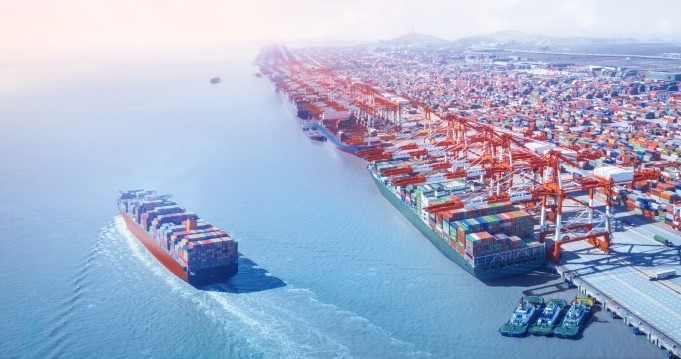UNCTAD called regulators to achieve greater transparency in container shipping, during a period of record rates and challenging performance by container shipping.
Changes in consumption and shopping patterns triggered by the pandemic have led to increased import demand for manufactured consumer goods, a large part of which is moved in shipping containers.
As at the third quarter of 2020, lessening of lockdown measures and varying speeds of recovery worldwide, as well as stimulus packages supporting consumer demand, inventory-building and frontloading in anticipation of new waves of the pandemic, contributed to leading to a further increase in containerized trade flows.
The increase in demand was stronger than expected and not met with a sufficient supply of shipping capacity. Empty containers to move exports from China to destinations abroad became unavailable. The reasons for this shortage were manifold
At the outset, the disruptions due to the pandemic, trade imbalances and changing trade patterns led to shifts in the geography of container trade. Empty boxes were left in places where they were not needed, and repositioning had not been planned for. Moreover, as carriers introduced blank sailings, that is, skipped port
calls, a mismatch between supply and demand for empty containers was exacerbated, as empty containers were left behind and failed to be repositioned.
The container crisis is also a reflection of a slowdown in and delays across the maritime supply chain because of strains caused by the pandemic, like port labour shortages, port congestions and capacity constraints in truck and other inland transport systems due, for example, to delays in undergoing necessary testing or delays by factories in returning containers.
These factors meant that container dwell times increased and empty containers could not return to the system in which they were most needed. Added to this is the fact that, since end-2020, container ships have begun to anchor off the west coast of North America, waiting for berths to become free. Full containers, still containing holiday decorations in February 2021, were stuck on ships, leading to a further shortage in capacity
Finally, the situation was further worsened by the obstruction of the Suez Canal. According to UNCTAD, as ships, and the containers on them, took longer to reach their destinations, the shortage of available empty boxes increased, including in Shanghai, China. Therefore, freight rates increased not only on the routes passing through the Suez Canal but also on nearly all other routes.
Increase in freight rates
The above trends caused freight rates to reach historical highs by end-2020 and early in 2021.
The surge in freight rates spread across some developing regions such as Africa and Latin America, where it outpaced the surge observed on the main East–West routes. Compared with the medians, the early-2021 peak freight rates were higher on all routes, including those depicted in the figure. In comparison, the lowest relative increase in freight rates was recorded on the Asia–East Coast North America route (+63 per cent), while freight rates from China to South America were 443 per cent higher than the median for that route
Suggestion for policymakers
Carriers, ports and shippers were all taken by surprise by the pandemic, and the subsequent shortage of empty containers observed since late-2020 is unprecedented. As UNCTAD explains, “no contingency plans were in place to pre-empt the lack of availability or to mitigate its negative impacts.”
Given current trends, several months will likely pass before this disruption can be absorbed across the maritime supply chain and before the system resumes smoother operations. In the meantime, there are three key considerations for policymakers, to help reduce the likelihood that similar situations will occur in the future.
- Trade facilitation and digitalization for resilient supply chains: The pandemic has highlighted the importance of resilient supply chains. Customs officials, port workers and transport operators have recognized the need to reduce physical contact, while at the same time keeping ships moving, ports open and cross-border trade flowing
- Tracking and tracing: Policymakers need to promote transparency and encourage collaboration along the maritime supply chain, while also ensuring that potential market power abuse is kept in check or prevented.
- Competition in maritime transport: It is also important to ensure that national competition authorities can monitor freight rates and market behaviour.




























































